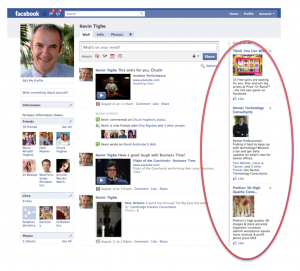Brian Solis’ blog on how businesses are not making the pivot from lip service to social customer service, explains that while intentions to improve customer engagement and relationships via social run high among executives, the reality is that businesses aren’t putting their investments where their aspirations are. (See his full post here.)
That being said, where is this misalignment coming from? Why doesn’t top management not take social media seriously? When we enter the business world, how can we convince our bosses not to make the same mistake? To answer this, I would like to bring in some key points from an article I read in the summer, by the Globe and Mail.
Chief executive officers are accustomed to measurable results.
This is the fault of society’s pressures, and as I have come to learn from other classes, it is also the reason why operations management is seen as below the CEO’s level of responsibility, as something that can be pawned off onto employees to make more efficient. Because social media’s impact cannot always be clearly defined and measured, CEO’s do not want to waste their time on work that won’t result in praising news articles or glamorous awards.
So how do we change this once we get out there?
The article suggest seeing what you can do with a social media campaign, and setting objectives. More importantly, making sure these objectives tie back to the company’s overall growth objectives. I think this is the step many marketing enthusiasts/experts forget. To really convince upper management to believe in your tactics, you need to be able to communicate their relevance to the business.
The article also suggests defining:
- A clear definition of your target market
- A clear understanding of the problems you solve, and the benefits of your products or services
- A description on how you will position your products or services
- Your company’s unique selling proposition; what sets you apart from everyone else
- Marketing tactics – direct mail, advertising, social media, etc.
Although these concepts are indeed important and need to be thought through, the article does not delve into the how. It is not easy to define your target market, or to truly understand your unique selling proposition. Companies must invest in market research to find the patterns and behaviours that are most characteristic of their most interested demographic. To do this, surveys or focus groups can be designed. To ensure customer participation, small incentives like free giveaways, trials of your product, or gift cards are a good idea. Research will also help you understand the perception your customers have on your product and specific brand, which will allow you to identify the company’s issues through the eyes of consumers, as well as which benefits of your product are most appreciated by customers. Only then will you have a better understanding of your target market and can position yourself properly, above the competition. Even then, training or brand ambassadors may be needed to get these key points across to your sales team and to ensure the entire organization understands your product and its benefits, as well as your consumers and their expectations.
Clearly, convincing top exec to accept your marketing initiative is not as simple as the article makes it appear. It does not occur in well-defined steps (as the bullet points suggest) but rather each point leads into the next, and builds a foundation for accomplishing the rest. It requires an entire strategy within itself of identifying issues and recommending solutions, before you can even begin to discuss your well-laid out specific marketing plan. But if you lay these issues and solutions out first, it will be clear to your managers that you understand how your marketing initiative can relate back into the business model, and compliment its success. This is the real HOW to win over top management.
The article does give a few other suggestions, such as “winning over the audience” and “using analytics” but I believe these are the most pressing, and where I feel I could add more value. (See article here for more info.)






